The coastal community of Pleasure Point, east of Santa Cruz, was practically designed and built as a surfer’s haven. It had great surf breaks — spots where the waves are reliably good. They drew Dawn-Age surfers by the ’30s or earlier, and certainly by the ’50s. And the Point’s Prohibition-era speak-easies and road house gave it a certain, ah, casual feel that it still owns.
Nor did it hurt that living was cheap in Pleasure Point. In the ‘50s and ‘60s and ‘70s, four or five — or eight or ten — local youth could rent a house out that way, do as little work as possible, and party and surf their brains out.
The rents rose with time and demand, but Pleasure Point is still a surfer’s haven. Some of the older surfers are still out there — plenty of gray hair rides the waves — along with new generations of local-grown surfers and transplants. Their activities produce many t-shirts.
Back in the day, surfers formed clubs; several operated out of Pleasure Point over the years, and they staged events. Here’s one:
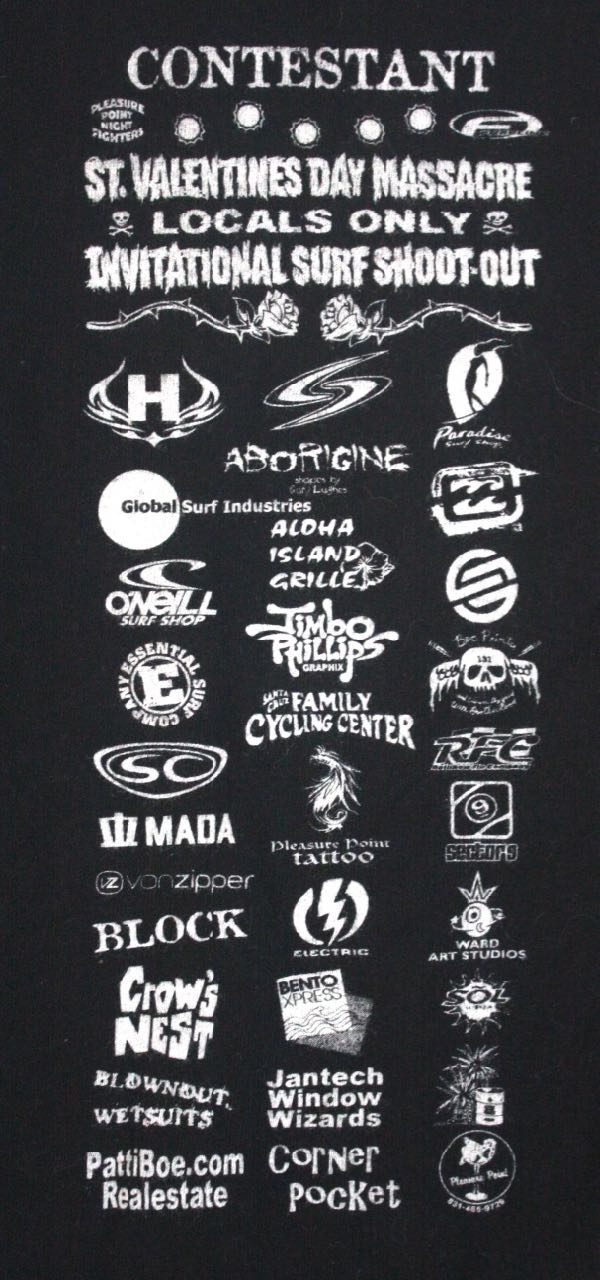
The sponsor bugs tell a lot about the surfing community. click to expand. Jimbo Phlllips is the artist who drew the t-shirt’s design; BroPrints is a silk-screen shop that probably printed it.
This came from a “locals only” surf tournament sponsored by the Pleasure Point Night Fighters surf club. Interesting name, no? The original Night Fighters were a volunteer fire brigade/rescue squad who fought fires in Pleasure Point in the ‘20s and ‘30s because no fire department would come out there after dark. Myth and legend turned the original Night Fighters into bad-ass vigilantes, and surf clubs by this name have come and gone.
Notice the small ‘Locals Only” sign on the tee; you didn’t surf unless you were invited. Santa Cruz surfers are a clannish bunch, and kind of wish that nobody came from out of town — or sometimes even from the other side of the same town — to surf “their” waves. That said, this latest incarnation of the Night Fighters styled itself a force for good by cleaning the beaches and campaigning for other beach-goers to do the same.
The Night Fighters don’t seem active these days — what do I know, I don’t surf — but here is a contest tee from a surf club that’s definitely alive and well: the Big Stick Surfing Association.
The Big Stickers like heavy long boards of eight foot length or more: hence the tourney name “Logjam.” Moreover, the Logjam is only for boards older than 1970. It’s old-school surfing for old-school surfers: as the shirt says, “Old boards, no cords.”
And what’s the talk about “no cords” and “no kook cords” on these tees? The terms refer to surfboard leashes. These are lines that surfers string between themselves and their boards so that the boards don’t go shooting off into infinity — or the rocks — when surfers wipe out.
In surfing slang, “kooks” are inferior surfers (usually weekenders from out of town) that don’t give their betters enough room on the waves. Grizzled old surfers think surfboard leashes encourage lazy and dangerous surfing by making it too easy to hang on to one’s board. Hence the nickname “kook cords.” More about that in a bit.
Surf clubs surfed together and competed together at Pleasure Point. And they partied, too:
A l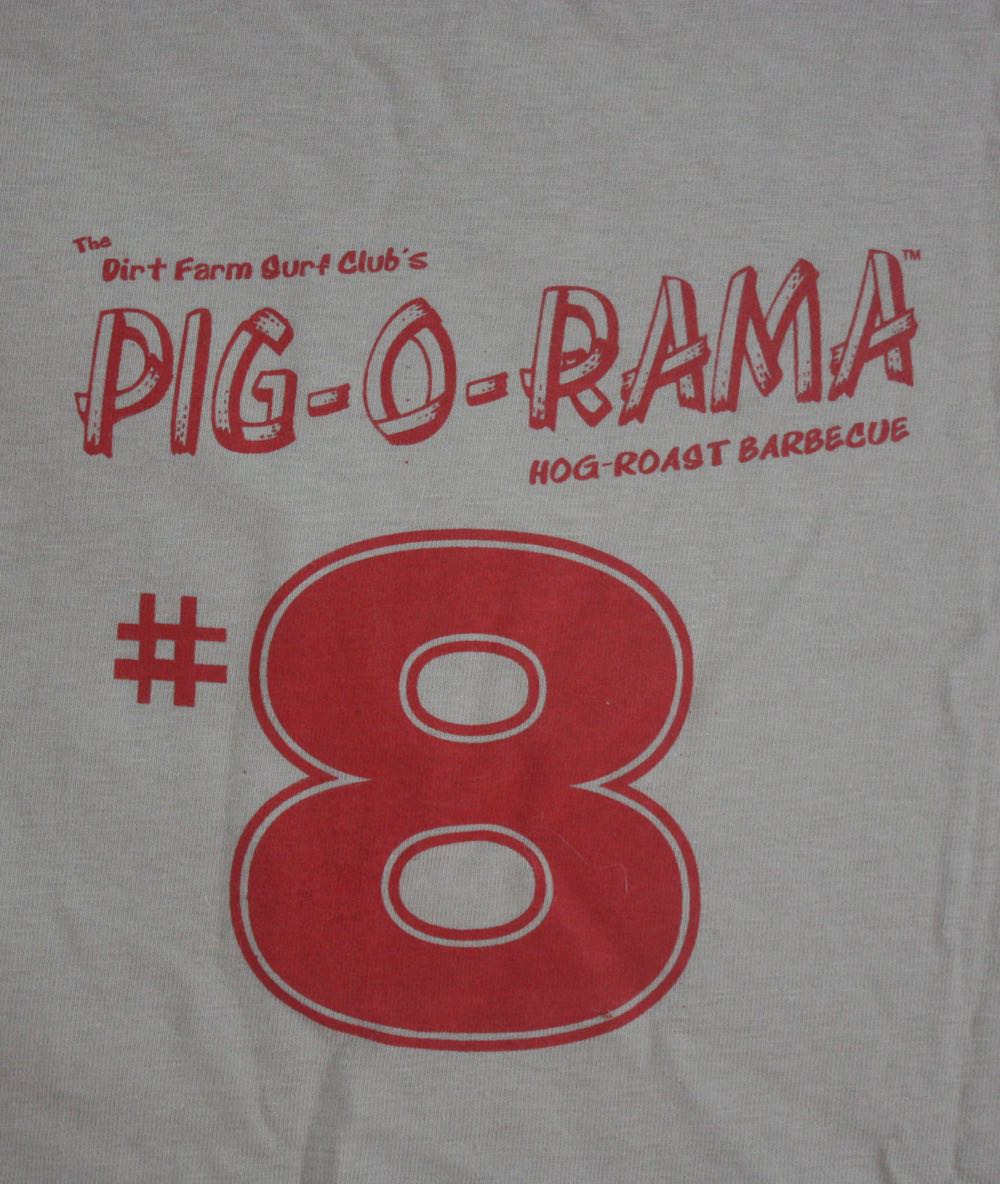 ittle Photoshop can be an awesome thing in the wrong hands, can’t it? The Dirt Farm Surf Club is or was a group of surfers who hung in a dirt field by the O’Neill’s surf break and the adjacent beach. The field —aka The Dirt Farm, of course — was used freely by surfers for activities both formal and informal. Locals surf contests like the Logjam use it, for example. Or you could just run your dog.
ittle Photoshop can be an awesome thing in the wrong hands, can’t it? The Dirt Farm Surf Club is or was a group of surfers who hung in a dirt field by the O’Neill’s surf break and the adjacent beach. The field —aka The Dirt Farm, of course — was used freely by surfers for activities both formal and informal. Locals surf contests like the Logjam use it, for example. Or you could just run your dog.
Next to the Dirt Farm, and above the beach, lay the expansive home and property of Jack O’Neill. O’Neill’s presence alone made Pleasure Point a surfing capital. Back in the ‘50s O’Neill popularized surfing by perfecting the wetsuit, which allowed surfers to surf longer in chilly water. O’Neill made it possible for surfers to surf every single day, and for hours. The sport boomed.
He b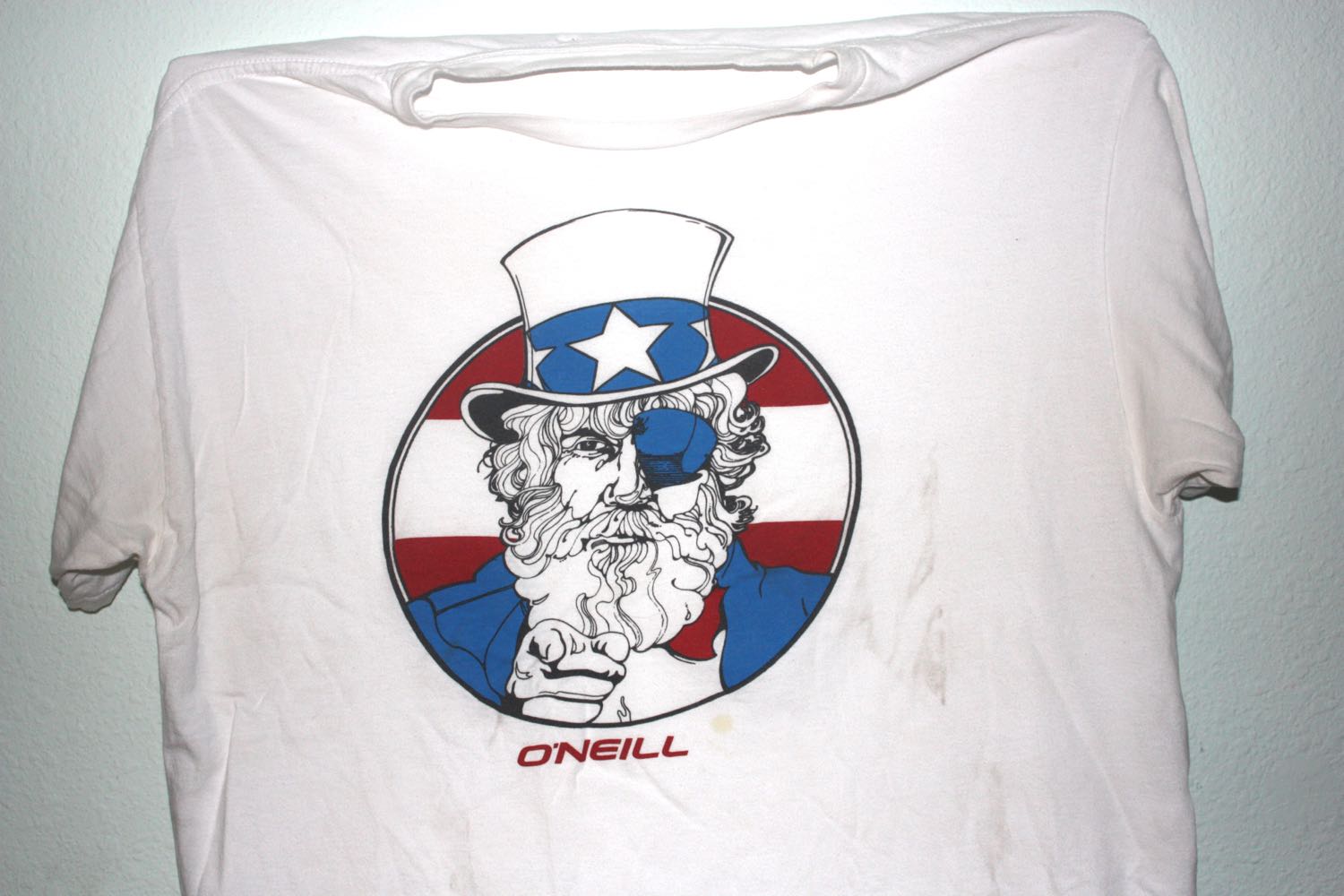 uilt an empire of surf shops, wetsuits, water gear and clothing of all kinds — including t-shirts. It seemed right that he looked like a one-eyed pirate, complete with beard and eye patch. His own company sold the t-shirt shown at right, and hundreds of other designs.
uilt an empire of surf shops, wetsuits, water gear and clothing of all kinds — including t-shirts. It seemed right that he looked like a one-eyed pirate, complete with beard and eye patch. His own company sold the t-shirt shown at right, and hundreds of other designs.
That missing eye? It was taken out by an accident with an early-version kook cord: the line lashed him right across the face. The irony is that O’Neill’s son invented surf leashes, and O’Neill eventually made a lot of money selling them. Live by the cord, go blind by the cord.
Now, every piece of ground along the coast is owned by somebody. And while there’d never been problems with surfers hanging out on the Dirt Farm, there was the future to think about. And O’Neill cared about that. So ten or so years ago, he bought the Dirt Farm for the free use of surfers and others, and willed it to the public good in perpetuity upon his death.
Jack O’Neill did die a few years back. A mighty paddle-out of 3000 surfers took place in his honor off his beloved Pleasure Point. And the Dirt Farm goes on forever, if not the Dirt Farm Surf Club..
Pleasure Point supports a whole ecosystem for surfers and their needs: surfer food, surfer services, surfer lifestyle. Below are a few tees for the other institutions that help make Pleasure Point … well, Pleasure Point.
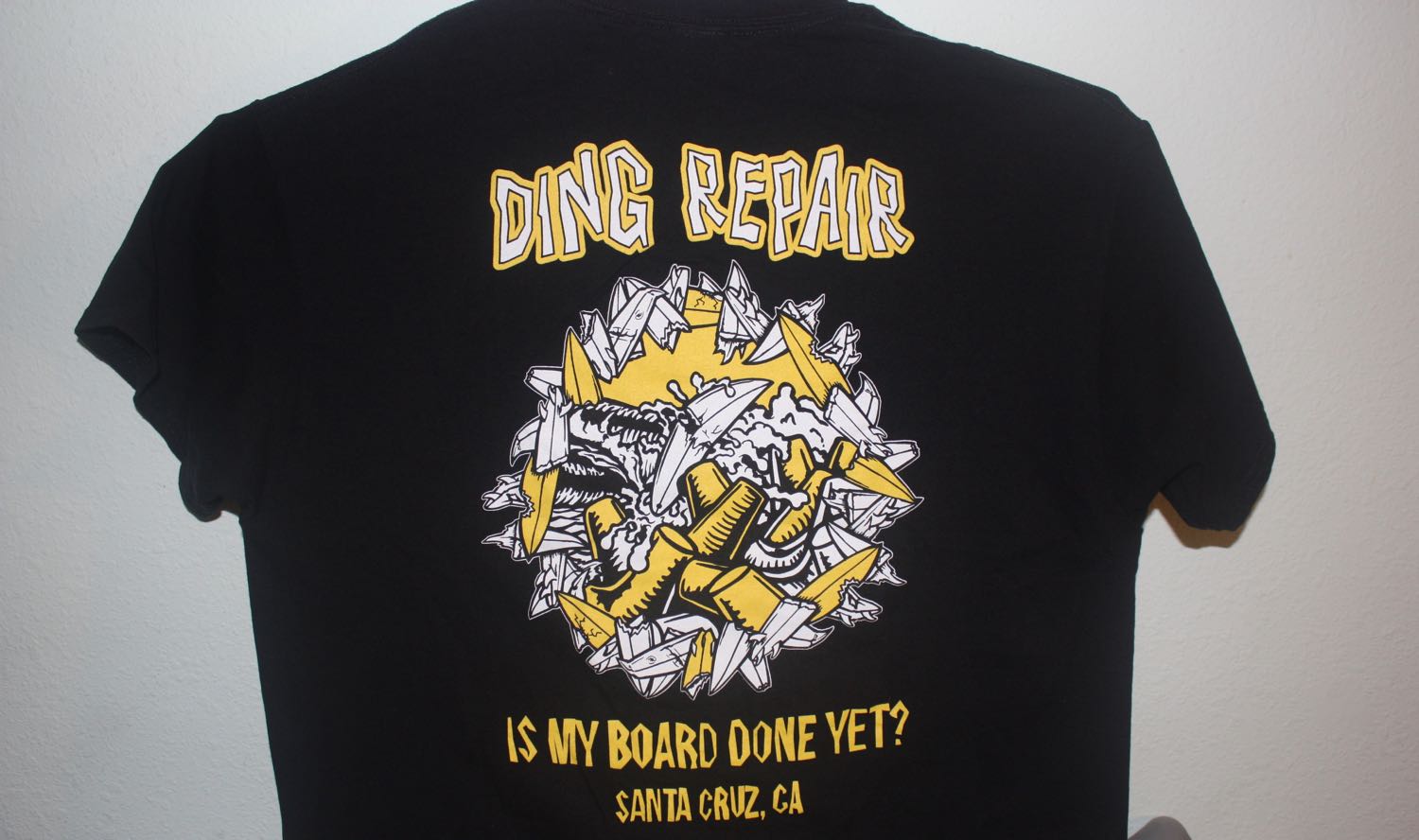
If you’re hardcore and ride without a kook cord, there’s always someone to fix the dings when your board gets away from you and runs into something hard. BE Sanding, near Pleasure Point, will do the job.
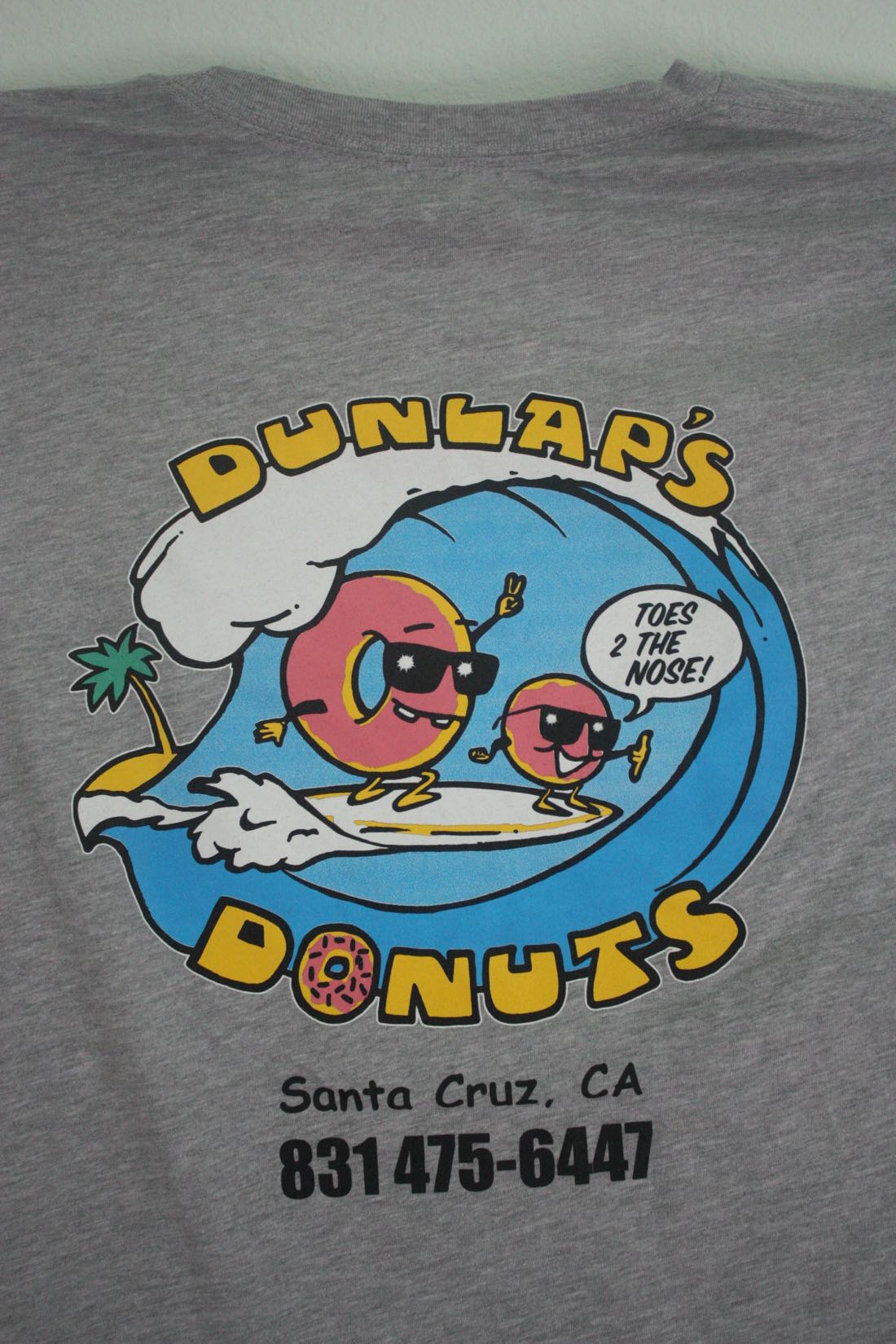
Head down Portola Drove on a Sunday morning and you may well see 50 to 100 cold-looking surfers in hoodies and shorts standing in front of Dunlap’s Donuts, coffee in hand. After a few early-morning hours in the cold water, a big coffee and a maple bar the size of a loaf of bread can look pretty good, wetsuit or no wetsuit.
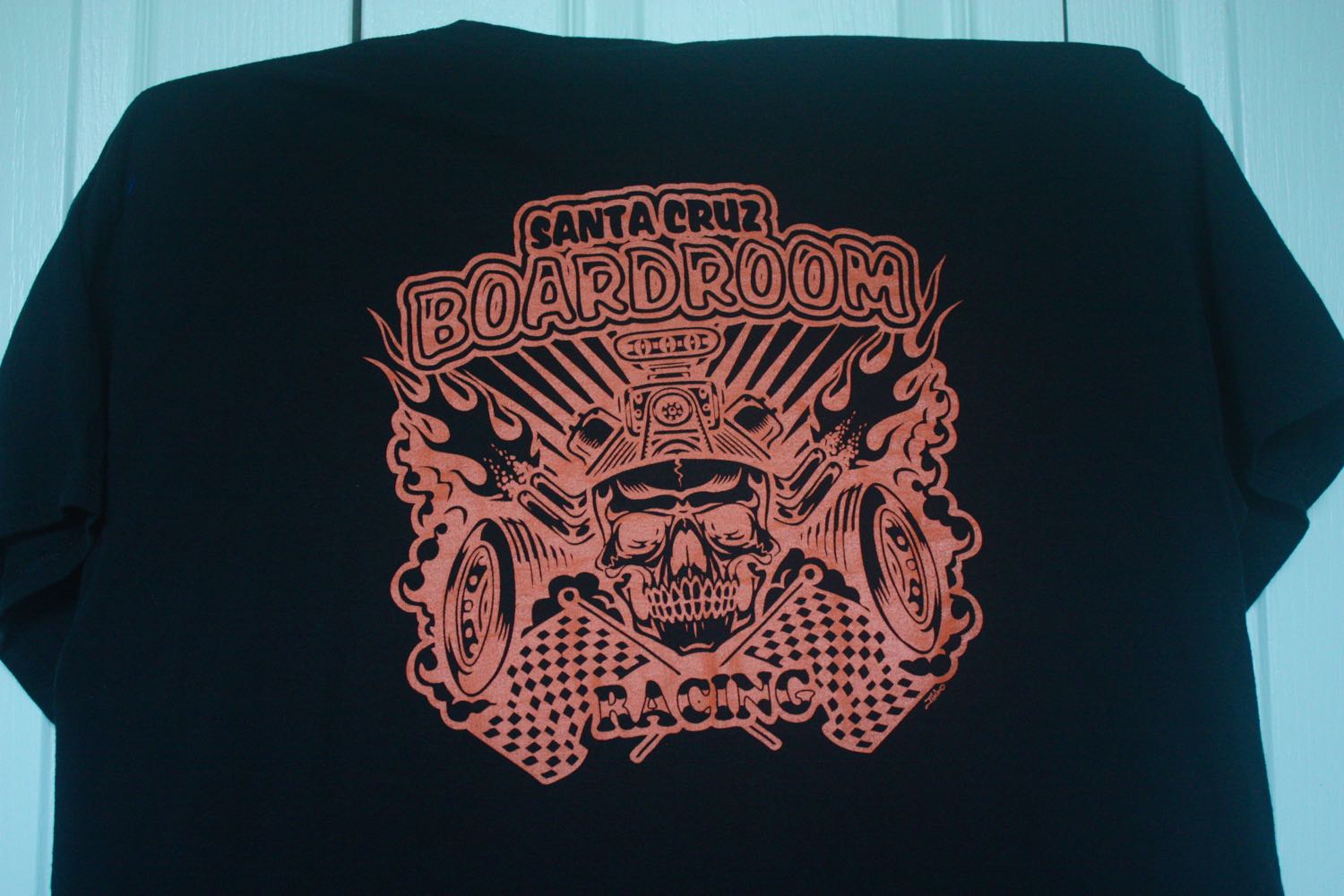
The Boardroom is a vast and venerable skateboard shop in Pleasure Point’s business district on 41st. Skateboarding was invented by surfers for times when the waves didn’t cooperate. Many surfers came from skateboarding. The same artists who do surf art also do skateboard art; and yes, many surf, and some surf at Pleasure Point. The Boardroom’s walls and ceiling are covered with skateboard art; it’s like a museum, and worth a visit if your tastes run that way.
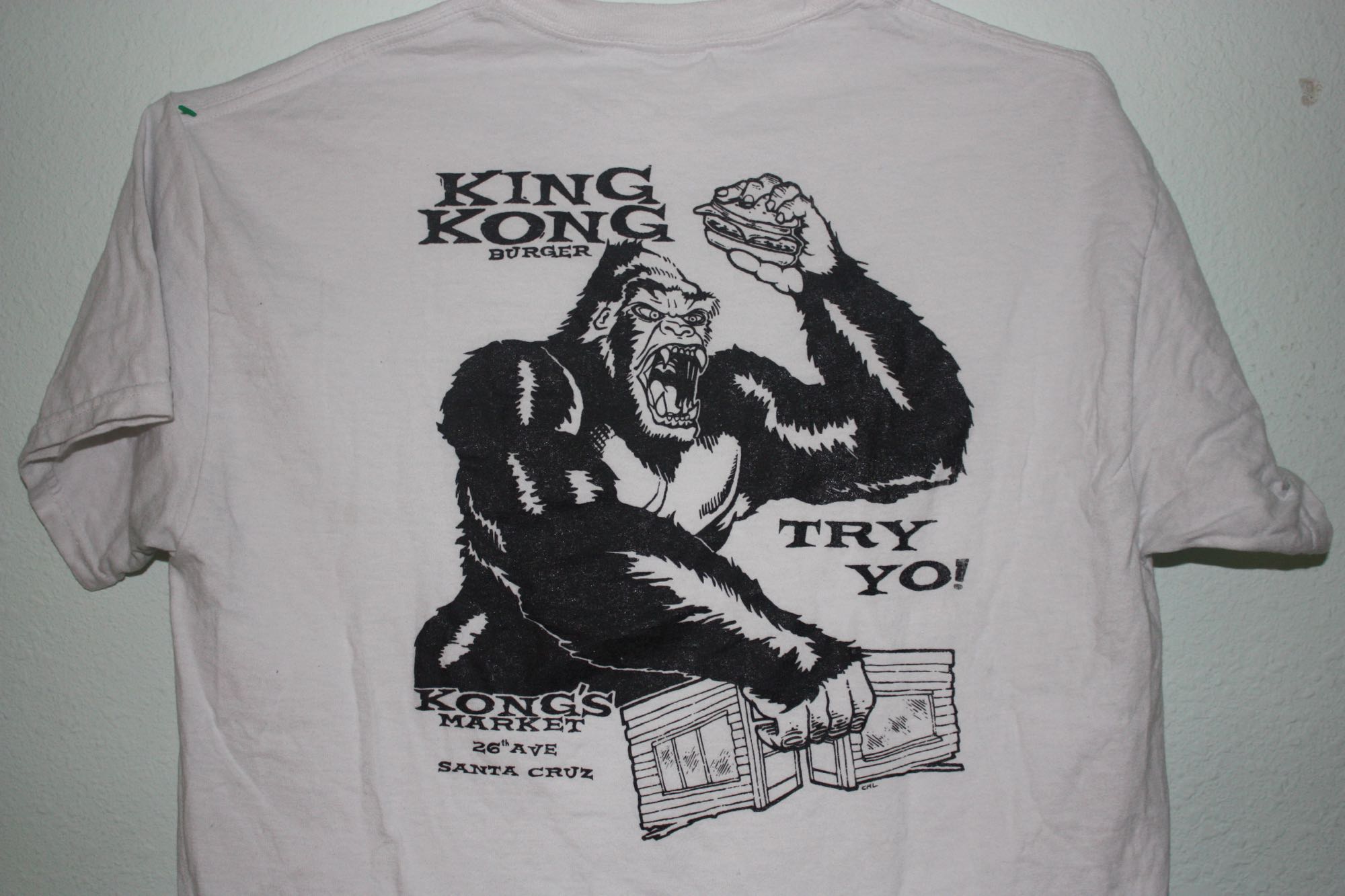
Show this tee to midcounty surfers, and sighs of nostalgia will ensue. Kong’s Market and Deli, run by the kindly Ahn family for many years, was a source of massive amount of cheap food at low-low prices: home-made egg rolls, the might Kong Burger, an insane breakfast burrito, and more. If they knew you, they might front you a keg of beer for your party/fundraiser and wait for the money after.
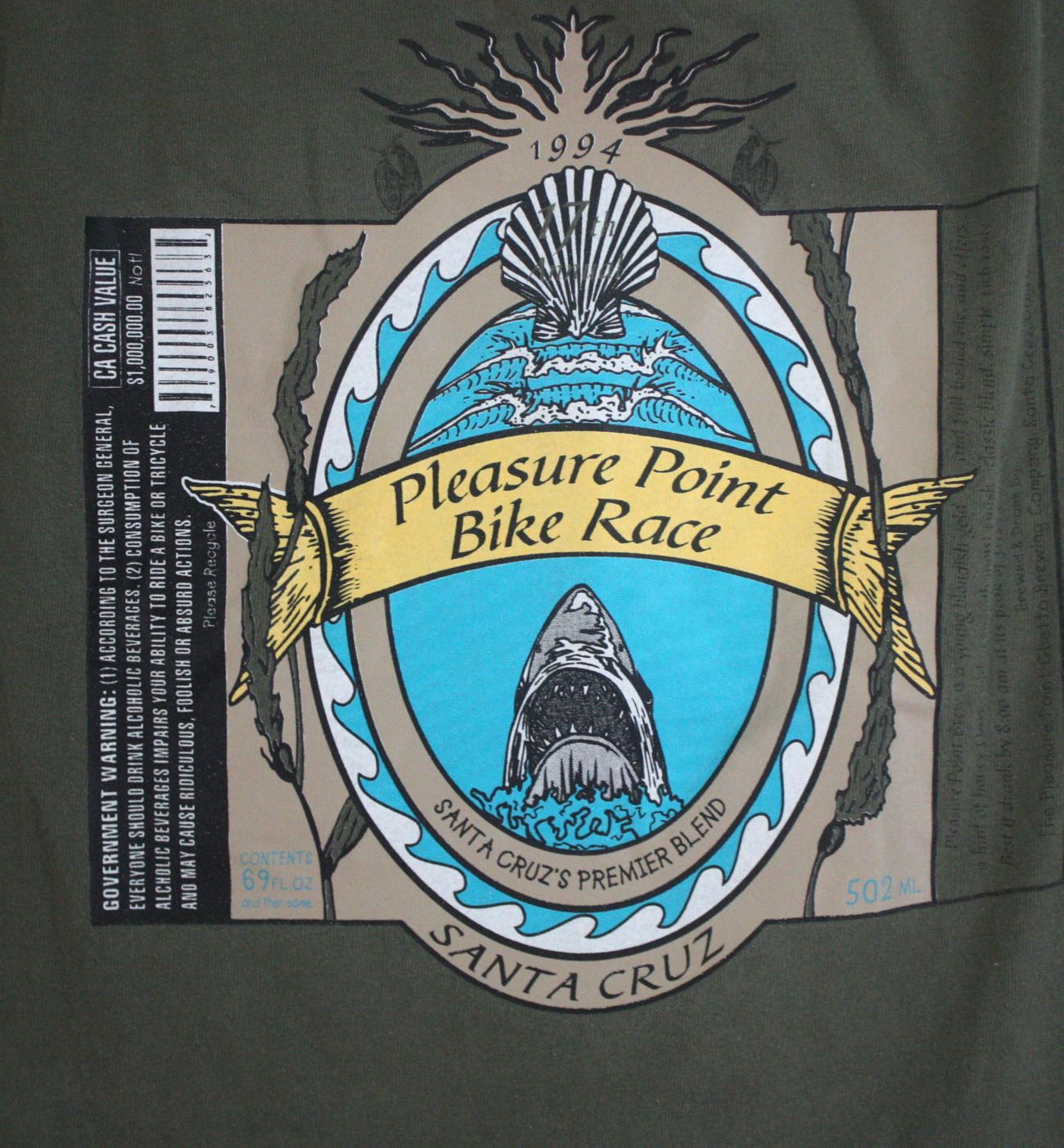
Chilling out, acting-out and clannishness are joint traditions in Pleasure Point culture. This was typified by the Pleasure Point Bike Race, which was no race at all. It was an invitation-only drinking party on two wheels. Your “ticket,” if you were allowed to buy one, was a t-shirt. Most of them seemed to have a beer theme:
You and your fellow racers would launch in a loose column and cycle between several different grand houses to which your t-shirt would admit you. Then you would eat and quaff to excess and party to a live band, and a good one at that.
Then, back on the bike and off to the next house on the circuit, to do it all over again, riding more shakily than before.
The Pleasure Point Bike Race ran from 1974 to about 2014 or thereabouts. This may have been the last t-shirt “ticket,” or close to it. Written info is hard to find.
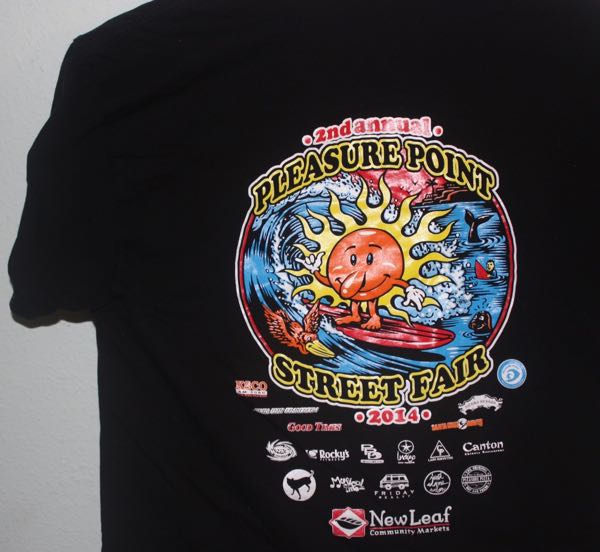
Pleasure Point still parties, but a little more openly now. There’s a street fair these days — and you don’t have to know anybody to get in.
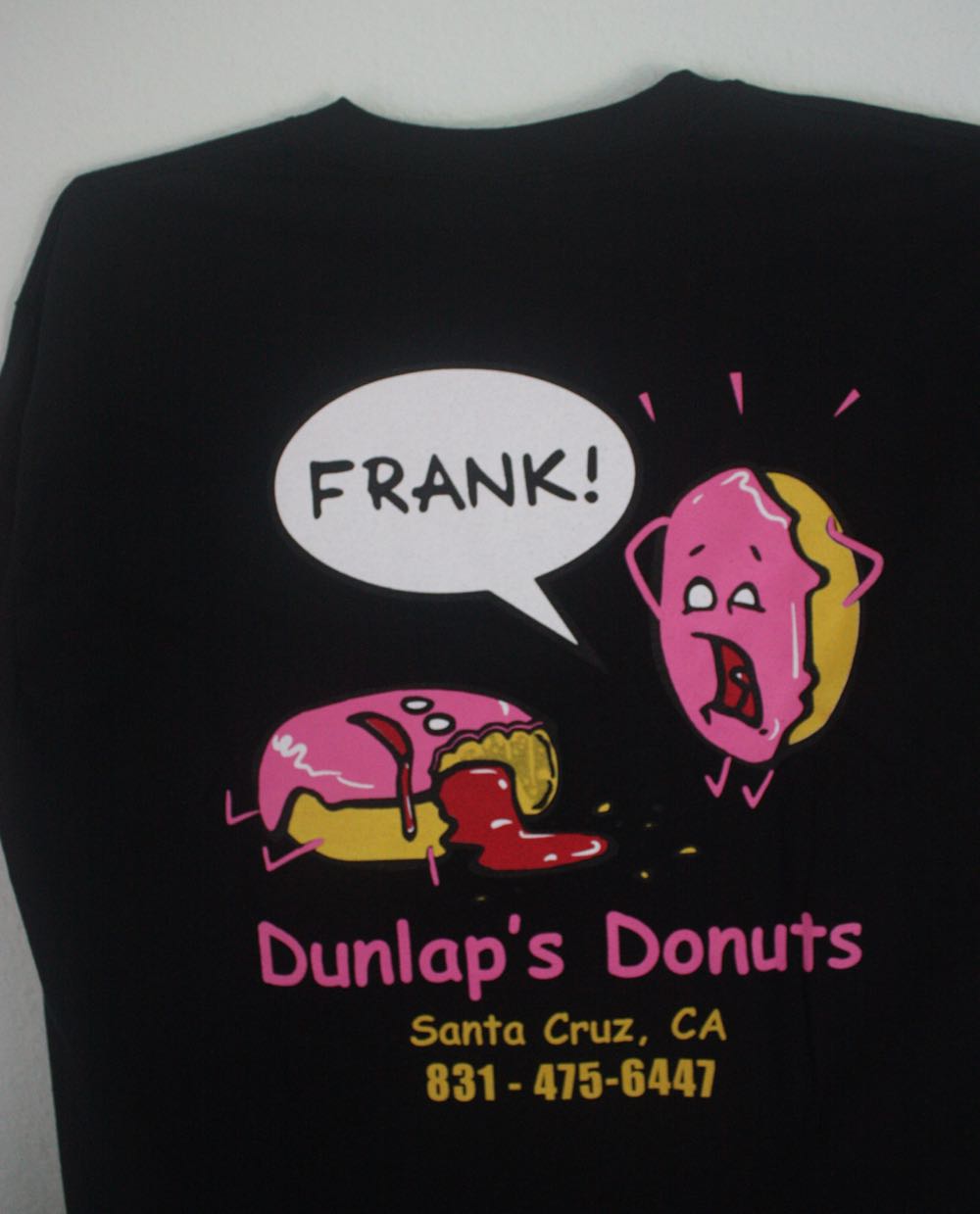
Just for laughs, another Dunlap’s Donuts tee. They put out a new one every year or so, and price it cheap so that everybody will buy one and wear it. Cheap advising, the manager explained to me when I stopped by. I asked her who Frank was. She said that was the donut cook’s idea, and he wouldn’t explain.
zxc

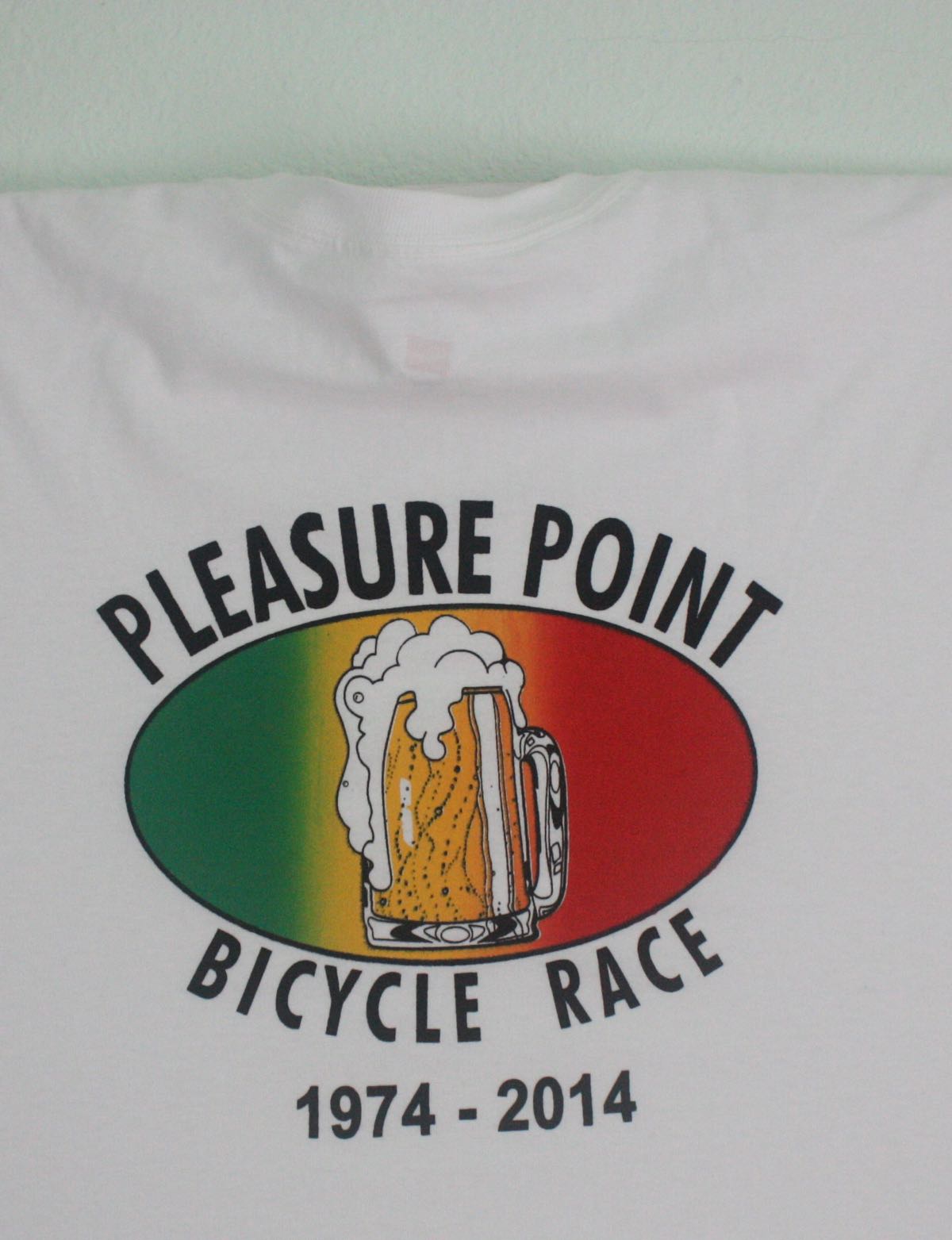
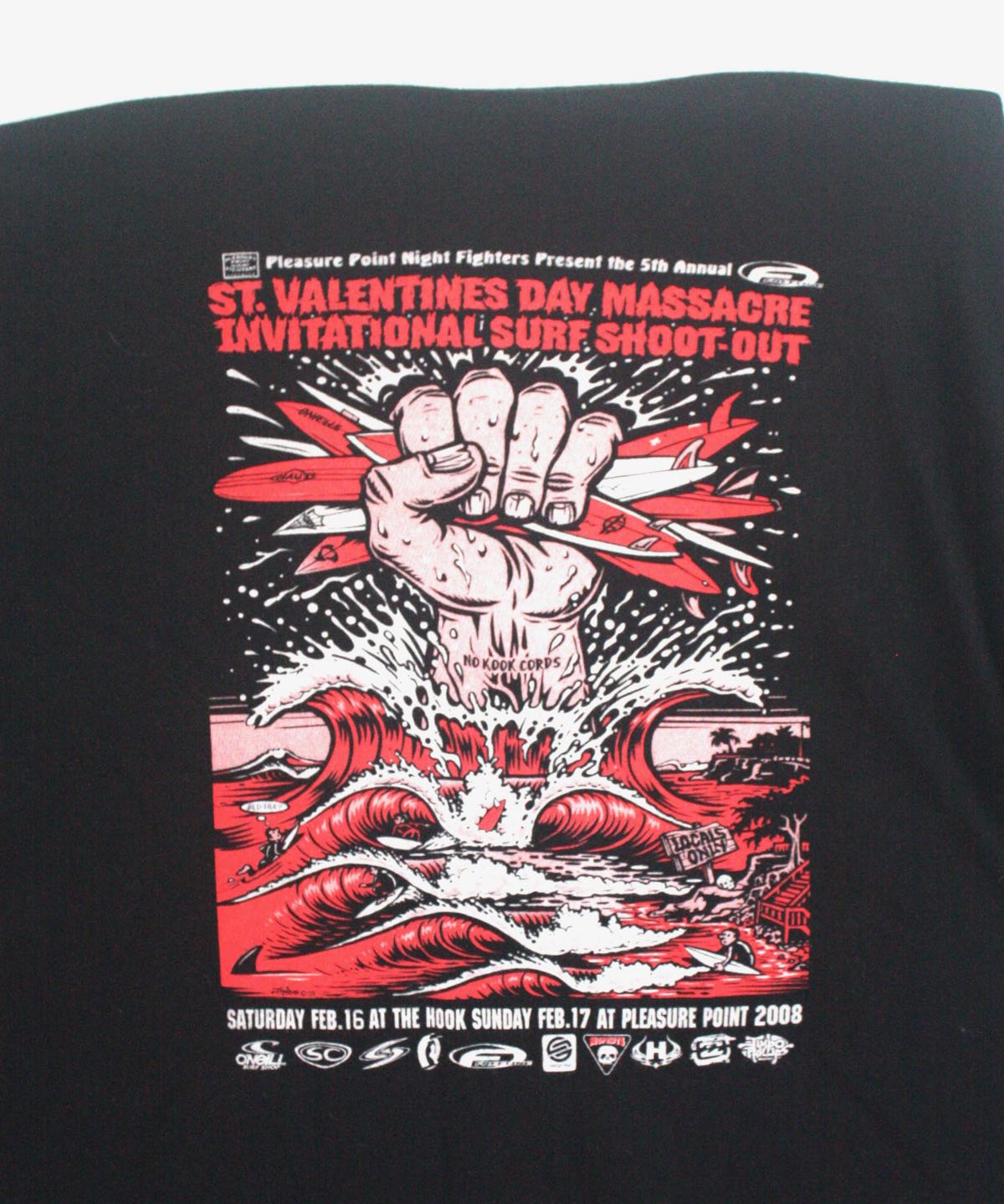
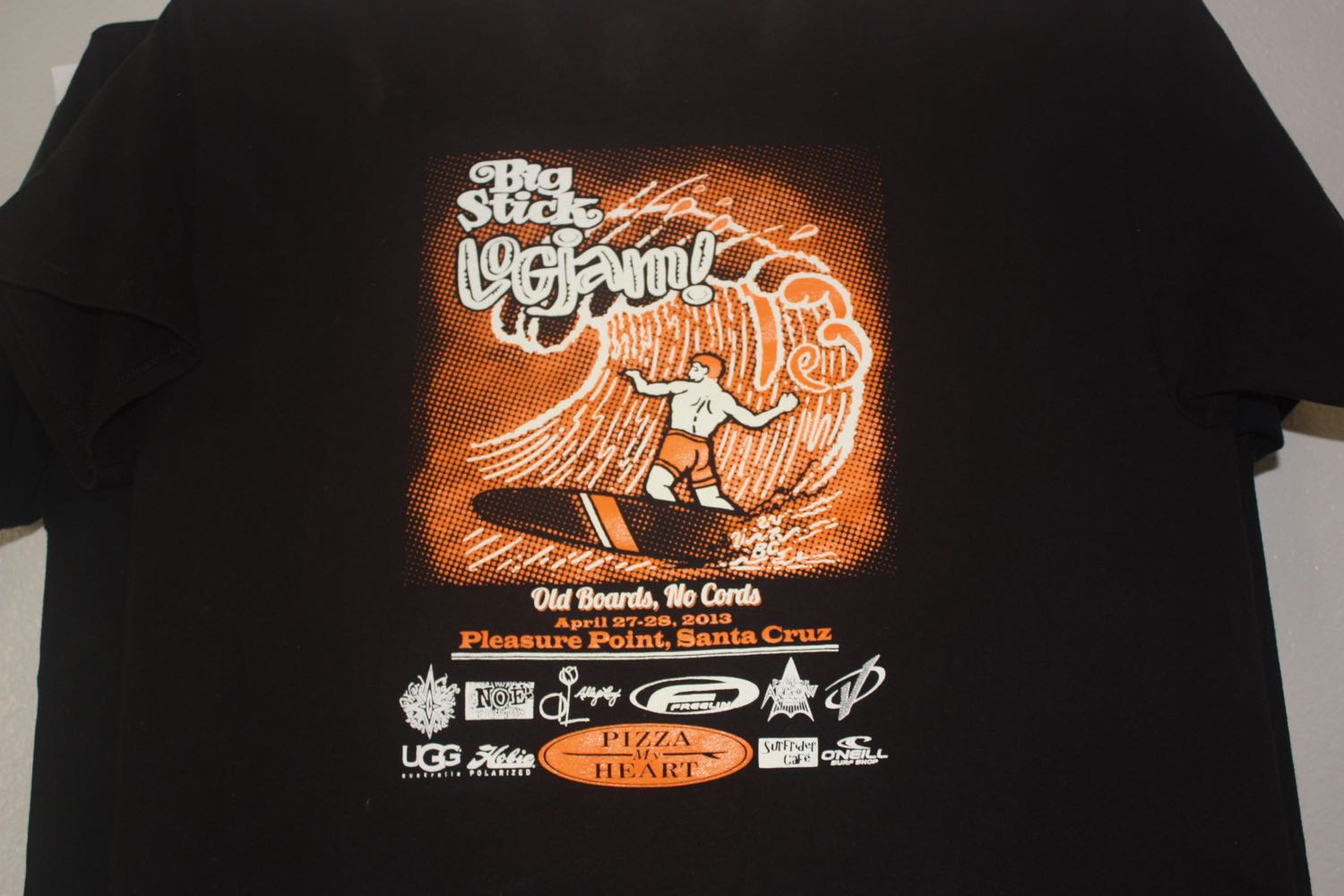
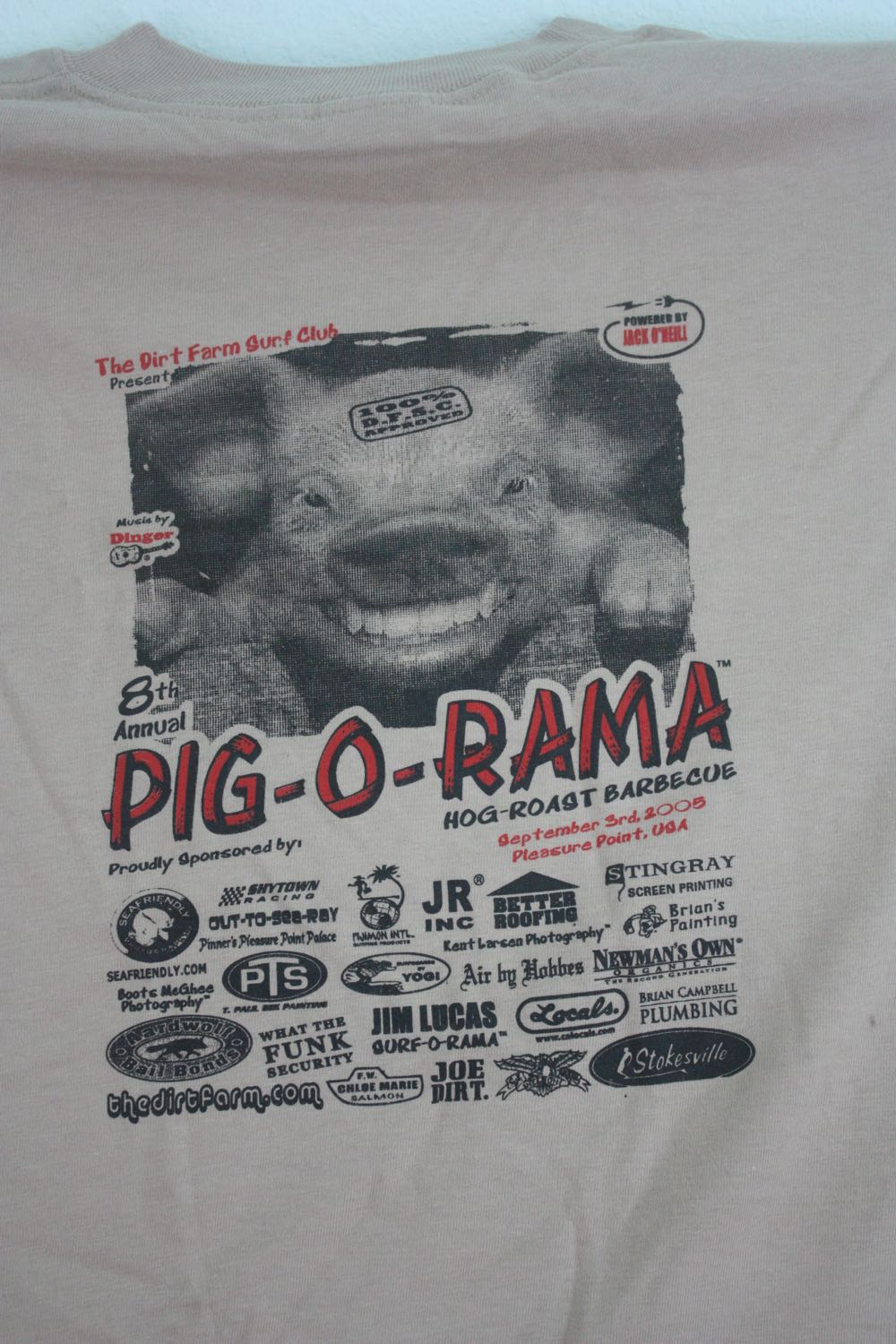
I treasure my Dunlap’s Donuts t-shirt that you gifted me – and I thank you. Now I know a little more about that donut shop. There was, btw, a punk group several years back that called themselves the Surf Nazis. I guess that sense of entitlement that some surfers exhibit was either being lampooned or celebrated. I had an album by them but frankly I don’t remember it well enough to be able to say one way or the other.